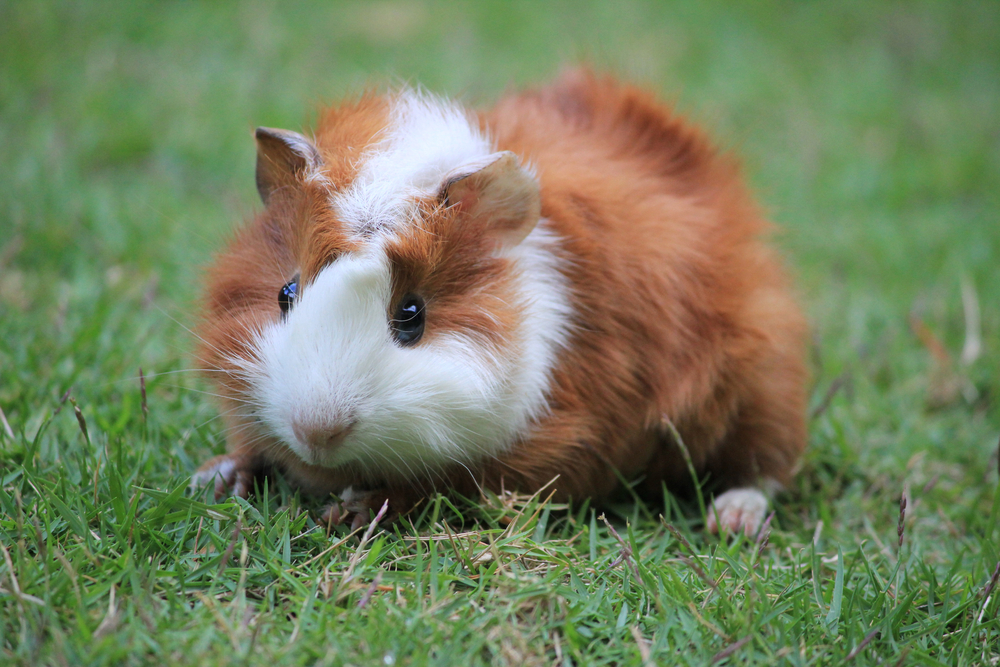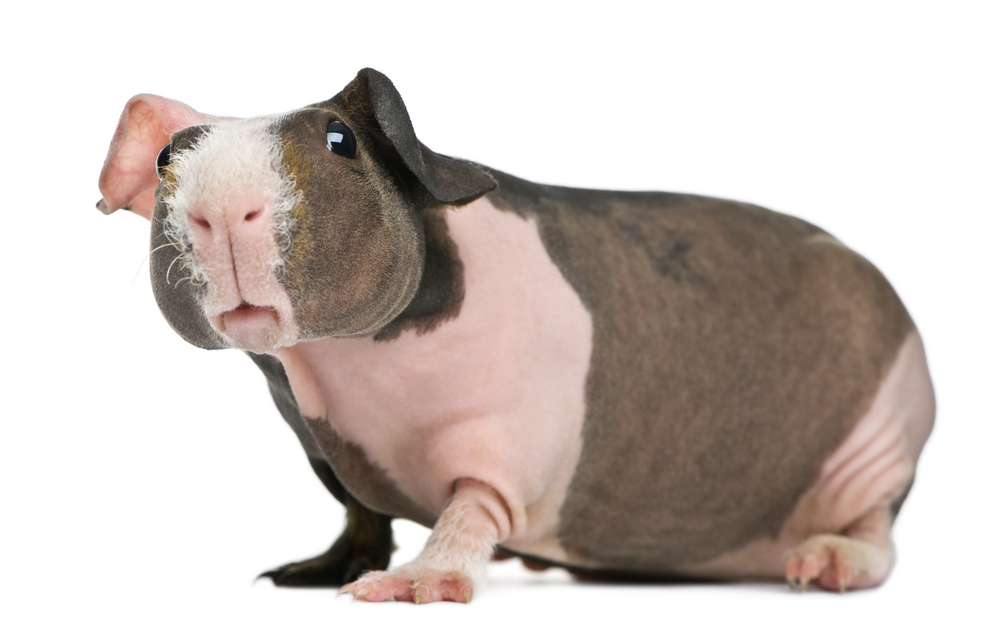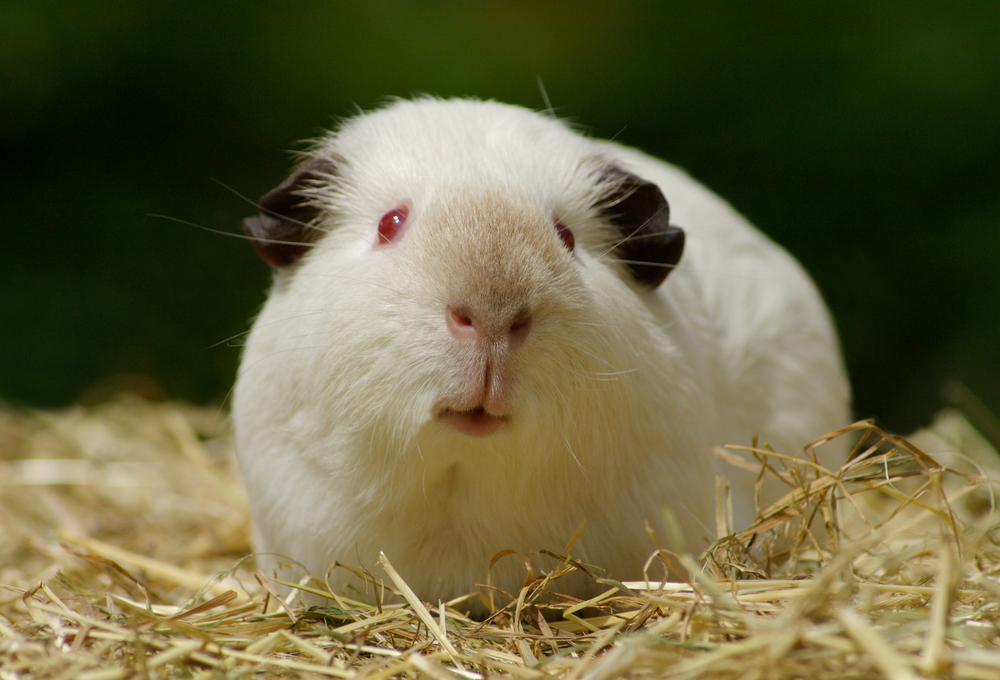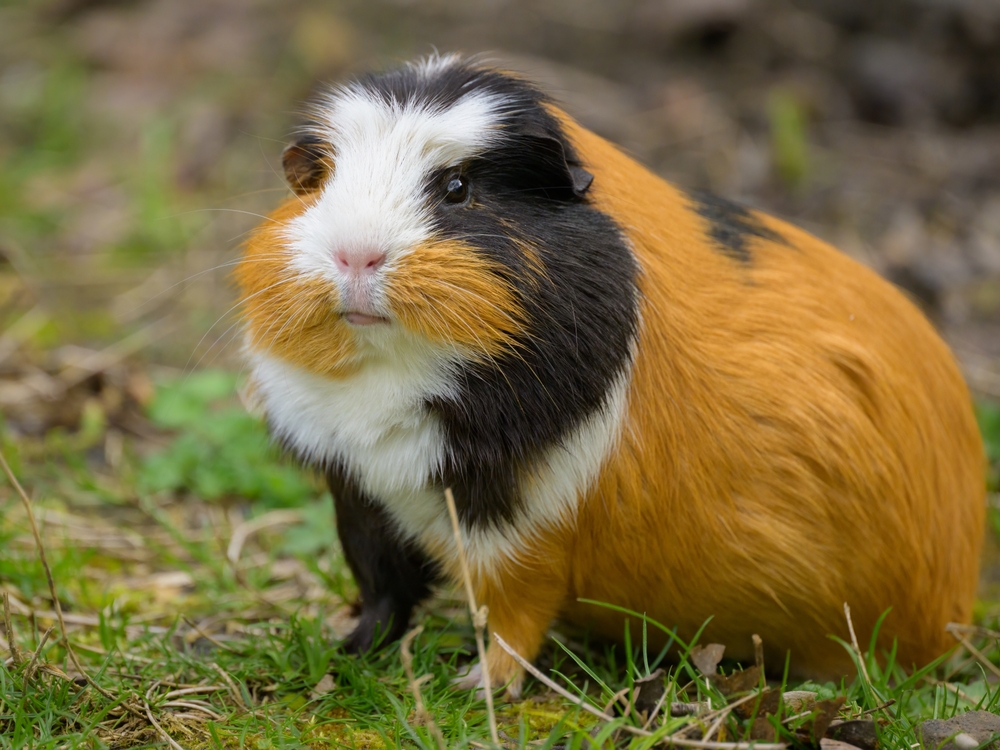The Black Skinny Guinea Pig is a domesticated variety of the species Cavia porcellus. Its closest relatives are other guinea pig breeds, both hairless and furred. In the wild, the closest kin is the montane guinea pig (Cavia tschudii) of South America, believed to be the ancestor of domestic guinea pigs.
About
The Black Skinny Guinea Pig is a striking variety of the hairless guinea pig, known for its nearly bald body and distinctive dark-colored skin. Unlike fully furred guinea pig breeds, the Skinny Guinea Pig has only sparse patches of short hair, often located on the nose, feet, and shoulders. In the black variety, the skin is a deep, solid black or dark brown, which gives it a sleek and unique appearance. Its smooth, wrinkled skin highlights the guinea pig’s body structure, making this variety especially recognizable among enthusiasts of exotic pets.
Like other guinea pigs, the Black Skinny Guinea Pig is gentle, social, and highly interactive, relying on companionship from its own kind or attentive human caretakers. It typically weighs between 700–1,200 grams (1.5–2.5 lbs) and measures 20–25 cm (8–10 in) in length. Because it lacks fur, it is more sensitive to temperature changes and must be housed in a warm indoor environment with soft bedding and no drafts.
Their diet and reproduction mirror that of other guinea pigs: a strict herbivorous regimen of hay, pellets, fresh vegetables, and daily vitamin C supplements. Breeding follows a 59–72 day gestation, producing small litters of fully developed pups. Lifespan averages 4–6 years, though attentive care and proper housing can extend their lives closer to 7 years.
The Black Skinny Guinea Pig is not a separate species but a specific color variety of the Skinny Pig, itself a breed of the domestic guinea pig. Its scientific name is Cavia porcellus, and it belongs to the family Caviidae, which encompasses guinea pigs, cavies, and maras. With their unusual appearance and affectionate nature, Black Skinny Guinea Pigs are popular with those who enjoy caring for rare and distinctive pets.
Physical Characteristics
Black skinny guinea pigs are a striking variety of the hairless guinea pig, easily recognized by their nearly bald appearance and solid dark coloring.
Coat:
As a “skinny pig,” they lack most fur, with only sparse patches of fine hair on the nose, feet, and legs. Their exposed skin is smooth, often with light wrinkling, and in this variety is a rich solid black or very dark brown tone, giving them a bold, uniform look.
Face:
They have a broad, rounded head with large, dark eyes and expressive, slightly drooping ears. Sparse or absent whiskers further emphasize their hairless features.
Body:
Their bodies are compact and cylindrical with visible skin folds, especially around the shoulders and legs. The lack of fur accentuates their muscular structure and smooth contours.
Size:
-
Length (Body): 8 to 12 in (20 to 30 cm)
-
Shoulder Height: About 4 to 5 in (10 to 13 cm)
Weight:
-
Adults typically weigh 1.5 to 2.5 lbs (700 to 1,100 g).
The Black Skinny Guinea Pig’s hairless form combined with its deep solid coloring makes it one of the most visually distinctive and unique guinea pig varieties.
Reproduction
The reproductive cycle of Black Skinny Guinea Pigs follows the same pattern as other guinea pig breeds, with special care needed for the hairless pups.
1. Mating and Courtship:
Black Skinny Guinea Pigs are social animals and breed year-round when males (boars) and females (sows) are kept together. Courtship includes vocalizations, gentle nudges, and chasing. They pair readily, especially in group settings.
2. Gestation:
The gestation period is relatively long for a small rodent, lasting 59 to 72 days, with an average of 68 days. This allows pups to be born in an advanced state of development.
3. Birth of Pups:
Litters usually contain 1 to 6 pups, most commonly 3 to 4. Like other guinea pigs, pups are precocial, born with open eyes, teeth, and mobility. In hairless varieties, pups are born with smooth, furless black skin and may require additional warmth in their first days.
4. Care and Nurturing:
Mothers nurse their young, though pups begin eating solid food within hours of birth. Because they lack fur, Black Skinny pups are more sensitive to temperature and need a stable, warm environment.
5. Weaning and Growth:
Pups are weaned at around 3 weeks of age. Male pups are often separated at this time to prevent early and unintended breeding.
6. Independence and Maturity:
-
Females: Reach fertility as early as 4 weeks.
-
Males: Reach maturity around 8–10 weeks.
Due to their early maturity and delicate skin, careful breeding management and attentive care are essential for maintaining the health of both mothers and pups.
Lifespan
Black Skinny Guinea Pigs, a solid-colored variety of the hairless guinea pig, have lifespans shaped by their care, diet, and sensitivity to environmental conditions.
Lifespan in the Wild (Not Applicable):
Black Skinny Guinea Pigs are a domesticated variety of Cavia porcellus and do not exist in the wild. They were developed through selective breeding and rely entirely on human care for survival.
Lifespan in Captivity:
With attentive care, Black Skinny Guinea Pigs generally live 5 to 7 years, though some may reach 8 years in optimal conditions. This is slightly shorter than many furred guinea pig breeds, largely due to their lack of protective fur and higher energy requirements.
Threats to the Black Skinny Guinea Pig:
-
Temperature Sensitivity: Without fur, they are prone to cold stress and overheating, requiring stable indoor environments.
-
Skin Issues: Their bare skin is susceptible to dryness, irritation, and accidental injury.
-
Nutritional Demands: They need slightly more food to maintain body heat and must receive adequate vitamin C to prevent scurvy.
-
Genetic Factors: Selective breeding for the hairless trait can sometimes lead to weaker constitutions.
Care and Protection:
A warm, stable habitat, a fiber-rich diet supplemented with vitamin C, regular veterinary care, and gentle handling are essential to ensuring longevity. With proper care, Black Skinny Guinea Pigs thrive as affectionate, long-lived companions.
Eating Habits
Black Skinny Guinea Pigs are herbivores with dietary needs similar to other guinea pigs, though their hairless bodies give them slightly higher energy requirements.
Diet:
Their diet must be centered on hay, which is essential for digestion and dental health, as their teeth grow continuously. Daily servings of fresh leafy greens and vegetables are required, especially those rich in vitamin C such as bell peppers, kale, and parsley, since guinea pigs cannot synthesize this vitamin. Vitamin C–fortified pellets provide additional nutritional support, while fruits should be offered sparingly as treats.
Feeding Behavior:
Black Skinny Guinea Pigs graze frequently, nibbling almost constantly throughout the day. Their higher metabolismcompared to furred guinea pigs means they consume slightly more food to help maintain body temperature and energy levels.
Special Considerations:
-
Vitamin C: Deficiency can cause scurvy, so daily supplementation is essential.
-
Hydration: Fresh, clean water should always be available.
-
Gradual Diet Changes: Sudden changes in diet may upset digestion; new foods must be introduced slowly.
Social Eating:
As highly social animals, they prefer to eat alongside companions, which encourages healthy feeding habits and reduces stress.
The eating habits of Black Skinny Guinea Pigs highlight the importance of a nutrient-rich, vitamin C–fortified diet that supports their faster metabolism and helps maintain skin and overall health.
Uniqueness
The Black Skinny Guinea Pig is one of the most distinctive guinea pig varieties, combining the unusual hairless trait with a bold, solid dark coloration.
Hairless Appearance:
Like all skinny pigs, the Black Skinny is nearly bald, with only sparse hair on the muzzle, feet, and legs. Their smooth, furless skin shows slight wrinkles, emphasizing their unique look.
Solid Black Coloring:
Unlike other skinny pigs that may display patches or mixed colors, this variety is prized for its uniform jet-black skin, which creates a striking and dramatic appearance.
Higher Metabolism:
The lack of fur causes greater heat loss, giving them a higher metabolic rate than furred guinea pigs. As a result, they need slightly more food to maintain body warmth and energy.
Sensitive Skin:
Their bare, dark skin is delicate and prone to dryness or irritation. Owners must provide a stable, warm environment and avoid exposure to rough surfaces or extreme temperatures.
Affectionate and Social:
Black Skinny Guinea Pigs share the social, vocal nature of other guinea pigs, often bonding strongly with companions and humans. Their combination of personality and rare appearance makes them a standout among guinea pig breeds.
The Black Skinny Guinea Pig’s combination of hairless form, solid coloration, and sensitive care needs makes it one of the most unusual and visually memorable guinea pig varieties.
Be the First to Share Photos of This Species.
FAQ’s
1. What is the closest species to the Black Skinny Guinea Pig?
2. How does the Black Skinny Guinea Pig compare to other guinea pigs?
While similar in size, reproduction, and social behavior to other guinea pigs, Black Skinny Guinea Pigs stand out with their nearly hairless bodies and solid black skin. This makes them more sensitive to temperature and skin issues, requiring warmer environments and attentive care. They also have slightly higher metabolic needs, meaning they eat more to maintain energy and body heat.
3. What national parks provide the best chance to see a Black Skinny Guinea Pig?
Black Skinny Guinea Pigs are a selectively bred, domesticated variety and are not found in the wild or in national parks. To see guinea pigs in their natural habitats, one would need to visit regions of South America’s Andes, where wild species like Cavia tschudii can still be found.







































































